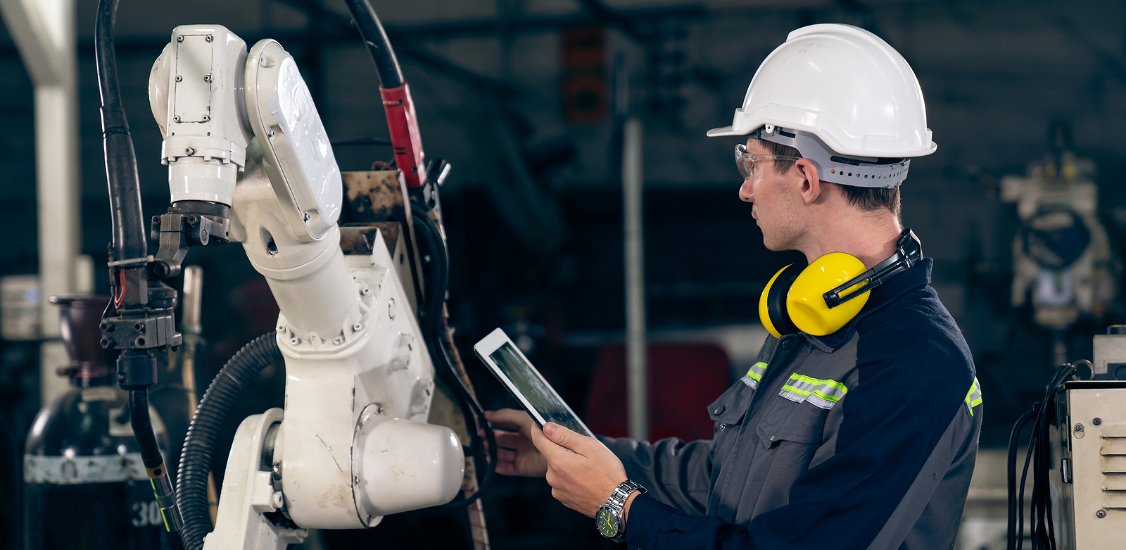Predictive maintenance is the use of artificial intelligence (AI) technology and the “Internet of Things” (IoT), the digital connection and communication between multiple objects, to predict maintenance needs. Essentially, it monitors information from machines and devices and then uses AI technology to predict when and where maintenance will be needed.
Through predictive maintenance, organizations can monitor and test numerous factors that may indicate current or upcoming needs for maintenance. For example, if a machine shows high temperatures, predictive maintenance senses the issue and informs maintenance professionals that services are needed. Or, at the very least, it tells maintenance professionals that services may be required in the near future. The process detects abnormalities throughout machine operation and sends an instant alert to the appropriate people, such as business managers or maintenance professionals.
How does predictive maintenance compare to preventive maintenance?
Predictive maintenance is different from preventive maintenance. According to IBM [1], predictive is a type of preventive maintenance, but not all organizations use this categorization.
Definitions vary, but preventive maintenance is the act of performing regularly scheduled maintenance regardless of the condition or status of the machine or unit. Changing a car’s oil every 3,000 miles, whether or not the oil is worn or the vehicle is overheating, is the perfect example of preventive maintenance.
Preventive maintenance is about fixing things before they break. However, the only variable used for preventive maintenance is time. Changes are made once a certain amount of time has passed. For example, it may occur when a machine has been used for a certain amount of hours.
The main difference between the two is that preventive maintenance is based on time, while predictive maintenance considers numerous variables monitored at the source. Predictive maintenance is based on the equipment’s condition, while preventive maintenance is based on the time since maintenance was last completed.
How does predictive maintenance work?
Predictive maintenance leverages a combination of data elements that vary depending on the machine or equipment. It continuously analyses equipment conditions throughout normal operations and alerts the appropriate people when something is off. Predictive maintenance significantly reduces the chances of unexpected machine failure by constantly monitoring equipment.
With predictive maintenance, industries can monitor and test a variety of indicators. These might include slow bearing speed or high temperatures. It senses abnormalities and sends alerts to ensure maintenance is completed promptly.
Examples of predictive maintenance
Predictive maintenance can be utilized by virtually any industry. Here are a few examples of predictive maintenance in action:
- Medical devices: Medical devices that measure blood pressure or urine values can be monitored in real-time to ensure they do not fail or provide misreadings. Factors like equipment temperature or humidity can be monitored.
- High-volume pumps: Various pumps, including centrifugal and axial-flow pumps, can be measured for numerous abnormalities. This can help predict and prevent bearing failures, seal failures, and cavitation, all without unnecessary (and expensive) parts replacement.
- Data centers: Data centers have critical infrastructures that must be monitored to ensure optimal performance. Predictive maintenance can help staff predict when a hard drive or processor is about to fail. It can flag issues with compressors, air filters, fans, and countless other pieces of essential equipment.
Advantages of predictive maintenance
Why should your team utilize predictive maintenance? There are many reasons why you might consider this technology:
- Improved uptime: By reducing the chances of equipment failure, predictive maintenance helps increase uptime so your operations can continue unimpeded. According to a report from the Deloitte Analytics Institute [2], poor maintenance strategies can reduce overall productivity by as much as 20%, while predictive maintenance increases equipment uptime by as much as 20%.
- Reduced costs: Unnecessary parts replacement can chew into your bottom line. Predictive maintenance helps ensure you are making replacements only when you need them. The same report from Deloitte Analytics Institute says that predictive maintenance reduces cost by 5 to 10%.
- Greater efficiencies: By monitoring equipment variables, predictive maintenance can help your staff make fine-tuned adjustments to increase efficiency.
- Improved safety: Predictive maintenance can improve safety in many ways. For example, it reduces the frequency of unscheduled repairs, which have inherent safety risks.
These are real benefits experienced by companies every day. Here are two examples of organizations successfully implementing predictive maintenance:
- United Road [3] quadrupled its fleet uptime while reducing maintenance costs.
- A large marine energy transportation and storage company implemented predictive maintenance and estimated a benefit of $580,000 from only two pilot programs. The benefit was mostly from reducing downtime.
Sources:






















